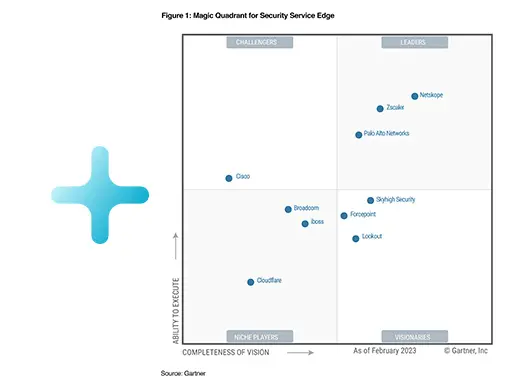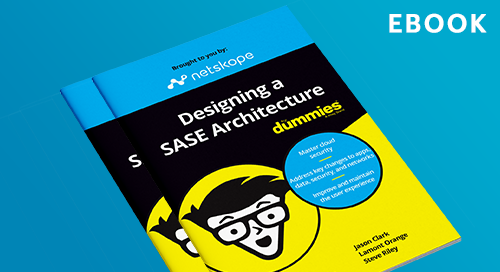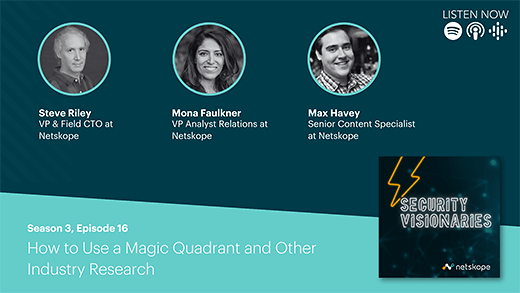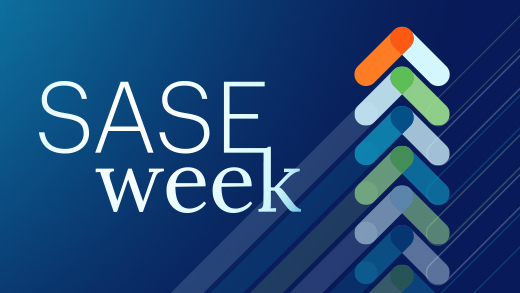One of the benefits of a secure access service edge (SASE) framework is that organizations can dramatically simplify the implementation of security services without having to go through constant network redesigns and appliance operating system updates. The new advanced security capabilities for Netskope Cloud Firewall, which we are introducing today, exemplify these principles, by allowing organizations to implement a number of important protections by enabling services without having to redesign the network or plan for outages.
Providing granular classification and enforcement with app control
The first new capability is app control for Netskope Cloud Firewall. To understand how Netskope delivers app control, it’s important to first recap a few key concepts. To start, many Netskope customers today use Next Gen SWG to overcome the lack of visibility of cloud and web activity within their current environment. By leveraging Netskope Next Gen SWG, organizations are able to assert context-driven, fine-grained activity control over 100+ criteria across cloud and web in ways that traditional hardware firewalls cannot.
But the difference is not purely a matter of functionality. Hardware firewalls have physical constraints both in location and computing resources. One cannot easily move a firewall when users move locations, and network teams can only support operations in a finite number of geographical regions. In addition, the finite compute available even in on-prem next-gen firewalls means that organizations are not able to take advantage of new and existing security capabilities, especially when they are computationally intensive such as with SSL decryption. This is problematic since more than 90% of traffic is encrypted these days. Thus, managing outbound security policy from a hardware firewall creates both security and logistical challenges, especially when considering the demands of hybrid work.
With the new release of app control capabilities for Netskope Cloud Firewall, organizations can now take the next step in their SASE journey. Instead of using app control solely for web and cloud applications, organizations can apply app control through Netskope Cloud Firewall for non-web traffic as well.
Why is app control important to Netskope Cloud Firewall?
App control adds additional granularity to policies that go beyond port and protocol. Port and protocol are foundational firewall controls, but port assignments are no longer meaningful for identifying applications, especially when you think about how many apps operate over HTTP/HTTPS. So at a base level, port-based policies help funnel traffic through Next Gen SWG. However, open ports could enable a port-hopping application to egress as well, so more precise controls are needed.
By using app control for Netskope Cloud Firewall, the traffic classification and policy enforcement definitions are based on the app itself. This enables organizations to create policies that limit the use of applications that could pose a risk. For example, remote desktop protocol (RDP) is an important tool, but can be very concerning when there are RDP sessions that connect to the internet. From a security point of view, organizations might want to establish tighter granular controls over RDP no matter what port it crosses. This way organizations can not only provide more granular policy controls, but also avoid opening a port that could be used for other purposes. Therefore, app controls help organizations minimize exposure to risk, especially when there are better ways to manage valid uses for RDP, such as using a zero trust network access (ZTNA) tool like Netskope Private Access instead.
Identifying and stopping potential attacks with DNS Security
A second new capability for Netskope Cloud Firewall is DNS Security. The threat landscape continues to expand, and attackers’ techniques take advantage of the ubiquity of DNS services and the distributed queries that lie outside the conventional access control and content inspection protections that organizations normally rely on.
At a baseline, an attacker will use sites to host phishing, command & control (C&C) servers, and malware, usually with domains that are not obviously recognizable as being dangerous. To keep users away from connecting from such a domain, DNS Security delivers domain blocking that can be applied categorically.
Time is detrimental to the attack, because the longer it remains linked to a particular domain, the more likely the site is eventually flagged as malicious and either blocked or taken offline. To stay ahead of threat researchers, attackers will use newly generated domains to operate from sites that have yet to be classified. More advanced techniques computationally determine new domains that would be under the attacker’s control in the future, using domain generation algorithms, which use domains that have yet to appear in order to reestablish communications when an older site is blocked. Netskope Cloud Firewall delivers protection against these techniques by applying the latest threat intelligence, augmented by third-party threat intelligence from Cloud Exchange, and combined with AI/ML technologies to add predictive capabilities that stop or sinkhole dangerous communications to newly emergent C&C sites.
Another technique for C&C and data exfiltration is to use tunneling over DNS by using software on the infected host to encode extra content within a DNS query. Given that DNS queries are distributed, an infected host could take advantage of the unused padding to covertly communicate with the attacker. Organizations can eliminate the blind spot in DNS tunneling by using Netskope Cloud Firewall to identify and stop DNS tunneling techniques, thus providing key protections against the later stages of a cyberattack before the damage is done.
These security services are but a few of the ways that the newly launched app control and DNS Security capabilities in Netskope Cloud Firewall can help your security posture. To learn more, visit the Netskope Cloud Firewall web page for more information.
If you’d like to hear more from me about firewalls, register for my session at SASE Week on September 14.




 Back
Back 























 Read the blog
Read the blog